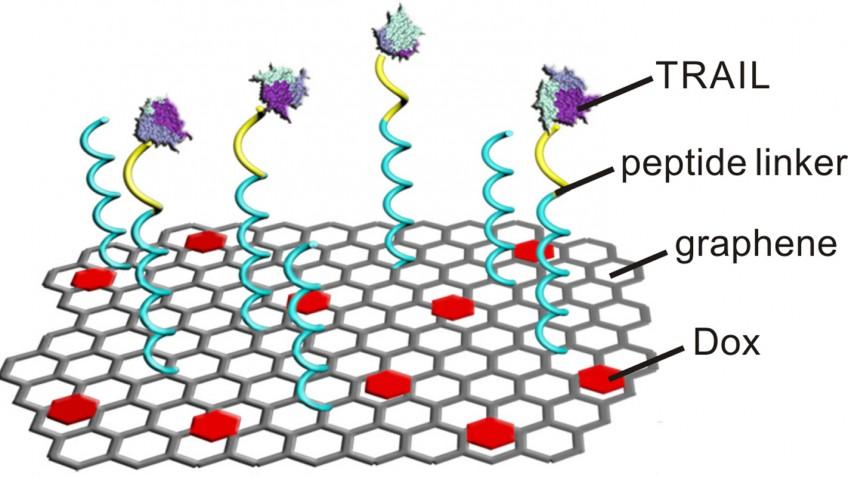
North Carolina State University released a report yesterday announcing that a team of international researchers have developed a technique that uses strips of graphene to deliver anticancer drugs to cancer cells. The technique, which delivers two drugs sequentially and is colorfully described as a “flying carpets” technique, was found to be more successful than delivering either drug in isolation.
The drugs administered were TRAIL, an anticancer protein, and doxorubicin (Dox). Researchers also found that TRAIL could successfully serve as an active targeting molecule to bind directly to the surface of cancer cells.
One-two punch for greater effect
A graphene strip was used to deliver the two drugs sequentially in order to cause the most damage to the cancer cell. TRAIL is most effective when delivered to the external membrane of a cancer cell, while Dox is most effective when delivered to the nucleus.
“These drug-rich graphene strips are introduced into the bloodstream in solution, and then travel through the bloodstream like nanoscale flying carpets,” explains Dr. Zhen Gu, senior author of a paper describing the work and an assistant professor in the joint biomedical engineering program at NC State and UNC-Chapel Hill.

Image: Zhen Gu
When the flying carpet comes into contact with a cancer cell, receptors on the surface of the cell latch onto the TRAIL. Meanwhile, enzymes that are common on the surface of cancer cells sever the peptides linking the TRAIL and the graphene. This allows the cell to absorb the Dox-laden graphene and leaves the TRAIL on the surface, where it begins a process to trigger cell death.
After the flying carpet is “swallowed” by the cell, the acidic environment inside the cell promotes the separation of the Dox from the graphene – freeing it to attack the nucleus.
The researchers are now looking for ways to fund additional preclinical studies to determine how the technique can best be used for treatment.
This research was carried out North Carolina State University, the University of North Carolina at Chapel Hill, and China Pharmaceutical University.
To learn more about this research, see the press release as well as the published findings in Advanced Materials.


